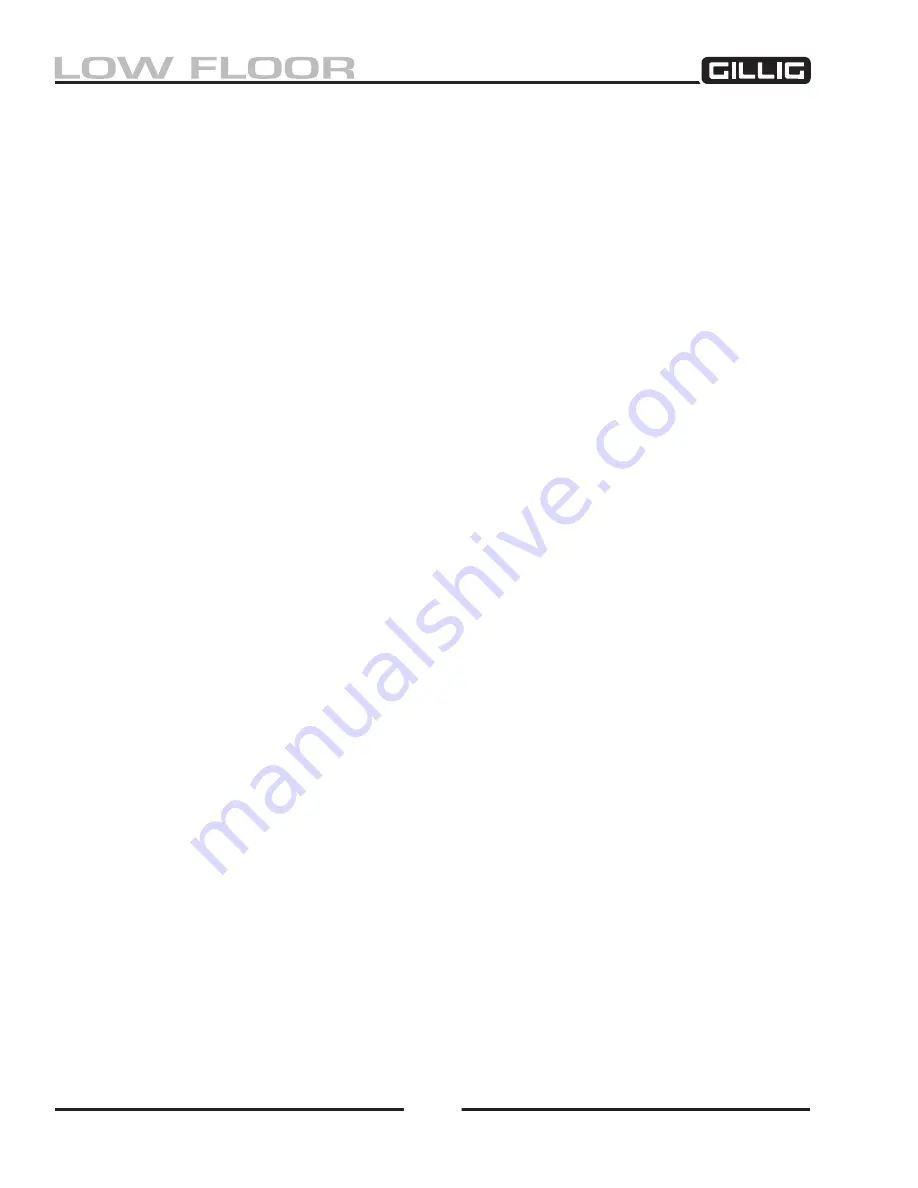
Brakes & Wheels
296
Balanced Inflation
Balanced inflation means that all the tires on an axle maintain the same air pressure. A difference in pres
-
sure between the front and rear tires may be permissible, within limits. There should not, however, be a
difference between the left and right tires on the same axle. A five psi under-inflation on a single front
tire can affect ease of steering; and can also create steering hazards. An under-inflated rear tire can affect
braking efficiency and balance. Balance tire pressures for ease of steering, comfort in riding, safety in
driving, minimum fuel consumption, and maximum tire life.
Pressure Loss
At periodic intervals, each tire should be checked for pressure loss with an accurate gauge before the
tires are brought to the correct pressure. The purpose of this check is to ascertain the exact pressure loss
in each tire. If, at the time the check is made, a definite pressure loss is discovered on any tire, an inspec
-
tion of the tire should be made to discover the cause of the loss and to correct the condition if possible.
This check will establish a danger signal in the condition of the tires. The pressure loss check should
always be made with the same gauge so the test will be consistent if there is any inaccuracy in the gauge.
Tire Inspection
• Nails, small stones, bits of metal, or glass imbedded in the tread should be removed. If loss of air
results, the tire should be removed from the wheel, inspected for internal damage, and a permanent
repair made from inside the tire.
• All tire valves and extensions should be in good condition and equipped with valve caps. Use high
temperature valve cores.
• A cut or snag which exposes cord body will allow water to seep through, which may damage the
exposed cords. Dirt, water, and other materials penetrating between the tread and cord create an
abrasive action which literally separates the cord from the tread. Repair or replace the tire.
• A small hole in the tire which has not broken enough cords to weaken the cord body will allow air,
moisture, and foreign materials to penetrate and cause separation, as in the above case. Sharp or
abrasive objects left in the tire work back and forth, damaging the cords, leading to separation, and
ultimately to failure or a blowout. Separations caused by damage may occur at a point other than
the point of puncture. Repair or replace the tire.
• Abrasions are caused by rubbing or gouging by vehicle parts or road hazards. The continued abrad-
ing is hazardous as it can cause the tire to fail. The damaged part must be repaired and the dam-
aged tire repaired or replaced
.
Содержание LOW FLOOR
Страница 18: ...Specifications 18...
Страница 58: ...Preventive Maintenance 58...
Страница 110: ...Engine 110...
Страница 138: ...Transmission Driveline Rear Axle 138...
Страница 182: ...Suspension 182...
Страница 260: ...Air System 260...
Страница 420: ...Electrical System 420 Deutsch DT Series Connectors...
Страница 421: ...Electrical System 421...
Страница 422: ...Electrical System 422 Deutsch HD 10 Series Connectors...
Страница 423: ...Electrical System 423...
Страница 424: ...Electrical System 424 Deutsch HD 30 Series Connectors...
Страница 425: ...Electrical System 425...
Страница 442: ...Heating Air Conditioning 442...
Страница 486: ...Body and Interior 486 Driver s Seat Troubleshooting Use the following chart to troubleshoot the USSC seat...
Страница 492: ...Body and Interior 492 Figure 11 33 USSC Seat Assembly...
Страница 493: ...Body and Interior 493 Figure 11 34 USSC Seat Suspension Assembly...
Страница 495: ...Body and Interior 495 Figure 11 37 Seat Air Connections...
Страница 506: ...GILLIG CORPORATION 25800 Clawiter Road Hayward CA 94545 Phone 510 785 1500 Fax 510 785 6819 Printed November 2006...






























